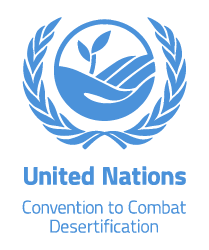Location
The United Nations Convention to Combat Desertification in Those Countries Experiencing Serious Drought and/or Desertification, Particularly in Africa (UNCCD) is a Convention to combat desertification and mitigate the effects of drought through national action programs that incorporate long-term strategies supported by international cooperation and partnership arrangements.
Members:
Resources
Displaying 151 - 155 of 585Tools for Soil Organic Carbon Estimation and Management Science-Policy Brief
Land degradation neutrality (LDN) is achieved if land degradation is avoided or reduced, and new degradation is balanced by reversing degradation elsewhere in the same land type through restoration or rehabilitation. The primary instrument for avoiding and reducing degradation is the application of sustainable land management (SLM) approaches and technologies. Because of its multifunctional roles and its sensitivity to land management, soil organic carbon (SOC) is one of the three global indicators for LDN, so predicting and monitoring change in SOC is vital to achieving LDN targets.
Land Degradation Neutrality for Biodiversity Conservation
Land degradation and biodiversity loss are among the most pressing environmental challenges facing humanity. Land degradation has reduced the productivity of nearly one-quarter of the global land surface, impacted the wellbeing of about 3.2 billion people and cost about 10% of annual global gross domestic product in lost ecosystem services. An estimated 23% of total anthropogenic greenhouse gas emissions derive from agriculture, forestry and other land uses, contributing to climate change.
Land Degradation Neutrality in Small Island Developing States
Land degradation exacerbates the unique vulnerabilities of Small Island Developing States (SIDS) to environmental challenges, such as climate change, flash floods, soil erosion, lagoon siltation, coastal erosion and sea level rise, undermining their economic potential. Land Degradation Neutrality (LDN) contributes to achieving the Sustainable Development Goals (SDGs) in SIDS, preserving biodiversity and increasing resilience to climate change. Land degradation has a strong negative impact on climate-sensitive sectors like agriculture, water resources management and coastal zone management.
Land Degradation Neutrality for Biodiversity Conservation
Land degradation and biodiversity loss are among the most pressing environmental challenges facing humanity. Land degradation has reduced the productivity of nearly one-quarter of the global land surface, impacted the wellbeing of about 3.2 billion people and cost about 10% of annual global gross domestic product in lost ecosystem services. An estimated 23% of total anthropogenic greenhouse gas emissions derive from agriculture, forestry and other land uses, contributing to climate change.
Global Land Outlook: West Africa Thematic Report: Land Degradation Neutrality: Benefits for Human Security
Located in the arid and semi-arid areas of West Africa, the Sahel has undergone profound changes over the past 50 years. Known for the prevalence of land degradation processes, the Sahel is suffering from the combined negative effects of population growth, human activities and climate variability, resulting in recurrent droughts and the continued decline of natural resources and land productivity.


